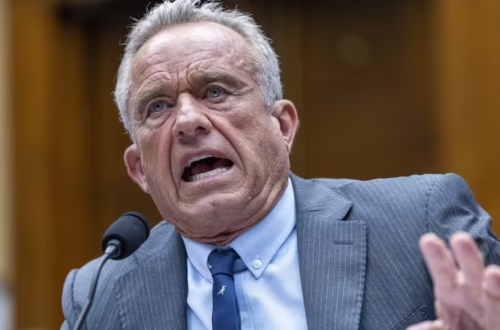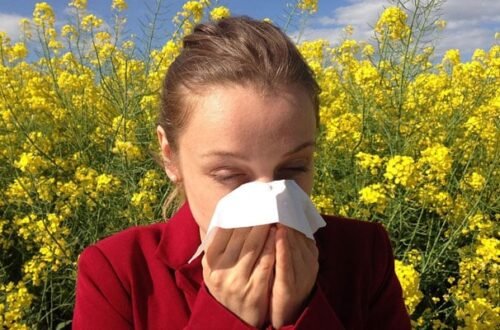A Historic Turning Point
On May 5, 2023, the World Health Organization (WHO) announced that COVID-19 was no longer a Public Health Emergency of International Concern (PHEIC), marking a symbolic end to a pandemic that reshaped the world. This decision, driven by declining death rates and widespread immunity, signaled a shift toward long-term management of the virus. Yet, the WHO cautioned that COVID-19 remains a global health threat, with thousands still dying weekly. This article explores the implications, challenges, and next steps in a post-emergency world.
Understanding the WHO’s Decision
What Is a Public Health Emergency of International Concern?
A PHEIC is the WHO’s highest alert level, reserved for severe disease outbreaks requiring global coordination. Declared for COVID-19 on January 30, 2020, it prompted lockdowns, vaccine development, and international collaboration. The 2023 downgrade reflects progress but doesn’t mean the virus is gone—it’s a call to transition to sustainable management.
Why Was the Emergency Status Lifted?
The WHO cited two key factors: a steady decline in COVID-19 deaths (from 100,000 weekly in January 2021 to 3,500 by April 2023) and high immunity from vaccines and prior infections. Most countries had returned to pre-pandemic life, with health systems under less strain. The decision followed the 15th meeting of the WHO’s Emergency Committee, which recommended ending the PHEIC.
The Role of Vaccines and Immunity
Vaccines, rolled out at record speed, were game-changers, with over 13.3 billion doses administered globally by May 2023. Combined with natural immunity from infections, they reduced severe outcomes, allowing societies to reopen. However, disparities in vaccine access, particularly in Africa, highlight ongoing challenges in equitable healthcare.
The Pandemic’s Lasting Impact
A Global Toll
COVID-19 infected over 765 million people and claimed at least 7 million lives, though WHO estimates suggest up to 20 million deaths. It disrupted economies, shuttered businesses, and pushed millions into poverty. The scars—economic, social, and emotional—remain, reminding us of the virus’s far-reaching consequences.
Long COVID: A Lingering Challenge
Long COVID, affecting an estimated 1 in 10 infected individuals, brings debilitating symptoms like fatigue and brain fog that can last years. With potentially hundreds of millions impacted, it demands ongoing research and healthcare support. The WHO emphasized that long-term care systems must adapt to this reality.
Social and Political Fallout
The pandemic exposed global inequities and fueled mistrust through misinformation. Political divisions deepened, with some leaders facing backlash for mismanagement. In the U.S., for instance, the response under former President Trump was a factor in his 2020 election loss, reflecting the high stakes of public health decisions.
What the End of the Emergency Means
A Shift to Long-Term Management
The WHO’s 2023-2025 Strategic Preparedness and Response Plan outlines five pillars: surveillance, community protection, care access, countermeasures, and emergency coordination. Countries are urged to integrate COVID-19 monitoring into existing systems, like those for influenza, to manage it as an endemic disease. This shift aims to balance vigilance with normalcy.
Global Variations in Response
While wealthier nations like the U.S. and European countries phased out restrictions by 2022, poorer nations, especially in Africa, face ongoing risks due to limited healthcare resources. The WHO warns against dismantling surveillance systems, as new variants could still emerge. The virus’s unpredictability keeps global health on edge.
Implications for Public Health Policy
Ending the PHEIC may reduce international funding and collaboration, shifting responsibility to national governments. In the U.S., the public health emergency ended on May 11, 2023, halting free vaccines for many. This transition raises concerns about access to care, especially for vulnerable populations.
Challenges Ahead
Ongoing Global Threat
Despite the downgrade, COVID-19 claimed a life every three minutes in April 2023, based on reported deaths. New variants, like Arcturus, continue to circulate, though they’re not more severe. The WHO stresses that complacency could undo progress, urging countries to maintain robust health systems.
Vaccine and Treatment Inequities
While 5 billion people received at least one vaccine dose by 2023, low-income countries lagged behind. Only 3% of global COVID deaths occurred in Africa, but weak health systems leave the continent vulnerable. Ensuring equitable access to boosters and treatments remains critical.
Misinformation and Public Fatigue
The pandemic unleashed a “torrent of mis- and disinformation,” eroding trust in institutions. Anti-vaccine movements and pandemic fatigue have reduced compliance with public health measures. Addressing these social challenges is as vital as tackling the virus itself.
Comparing Global Responses
| Country/Region | Response Highlights | Challenges Faced |
|---|---|---|
| United States | Rapid vaccine rollout; ended emergency May 2023 | High death toll (1.1M); political polarization |
| Africa | Low death rate (3% of global total); community resilience | Limited vaccine access; weak health infrastructure |
| China | Strict lockdowns until late 2022; rapid reopening | Surge in cases post-restrictions; transparency issues |
| Europe | Early end to restrictions (2022); high vaccination rates | Initial high death tolls in UK, Italy |
Pros and Cons of Ending the PHEIC
Pros:
- Signals global progress, encouraging economic recovery.
- Frees resources for other health threats like HIV and malaria.
- Reflects declining mortality and hospital pressures.
Cons:
- Risk of reduced funding and surveillance, especially in low-income nations.
- Potential for public complacency, ignoring ongoing risks.
- Challenges in addressing long COVID and new variants.
Personal Reflections: A Nurse’s Story
During the pandemic’s peak, I spoke with a nurse named Sarah in New York City, who worked 16-hour shifts in an overflowing ICU. She described the heartbreak of watching patients die alone, separated from families, and the relief when vaccines arrived. Her story underscores the human toll and resilience that defined this era. The WHO’s declaration feels like a nod to her sacrifices, but she worries the world might forget the lessons too soon.
Tools and Strategies for Moving Forward
Surveillance and Monitoring
The WHO recommends integrating COVID-19 tracking into global influenza systems. Tools like the WHO’s Coronavirus Dashboard provide real-time data on cases and deaths, helping governments stay proactive. Visit www.who.int for updates and resources.
Vaccination and Boosters
Regular boosters, especially for immunocompromised individuals, remain crucial. The FDA suggests boosters every six months for high-risk groups. Local health departments and pharmacies offer appointments—check www.cdc.gov for locations.
Community Protection Measures
Simple steps like improved ventilation and optional masking in high-risk settings can reduce transmission. Organizations like the African Wildlife Foundation offer community-based models for health education, adaptable to COVID-19. Learn more at www.awf.org.
People Also Ask (PAA)
When did WHO declare COVID-19 no longer an emergency?
The WHO announced on May 5, 2023, that COVID-19 was no longer a Public Health Emergency of International Concern, following a recommendation from its Emergency Committee.
Is the COVID-19 pandemic over?
No, the pandemic isn’t over. The WHO emphasized that COVID-19 remains a global health threat, with ongoing deaths and the risk of new variants. The declaration marks a shift to long-term management.
How can I protect myself from COVID-19 now?
Vaccinations, boosters for high-risk groups, and good hygiene practices like handwashing are key. In high-transmission areas, consider masking. Check www.cdc.gov for local guidance.
Where can I find reliable COVID-19 data?
The WHO’s Coronavirus Dashboard and CDC’s data tracker provide accurate, updated statistics. Visit www.who.int or www.cdc.gov for comprehensive information.
FAQ Section
Why did the WHO end the COVID-19 emergency status?
The WHO cited declining death rates, high immunity from vaccines and infections, and reduced strain on health systems. The decision, made on May 5, 2023, followed a year-long downward trend in cases.
Does this mean COVID-19 is no longer dangerous?
No, COVID-19 remains a threat, killing thousands weekly and posing risks through new variants and long COVID. The WHO urges countries to maintain surveillance and healthcare systems.
Who should still get COVID-19 boosters?
Immunocompromised individuals and high-risk groups should get boosters every six months, as recommended by the FDA. Check with your doctor or visit www.cdc.gov for guidance.
What are the risks of new COVID-19 variants?
New variants, like Arcturus, could increase transmission, though current ones aren’t more severe. Ongoing surveillance is critical to detect and respond to changes.
How can communities stay prepared for COVID-19?
Communities should maintain testing, vaccination programs, and public health education. Tools like the WHO’s Strategic Plan and local health resources help. Visit www.who.int.
A Path Forward
The WHO’s declaration is a milestone, but not an endpoint. COVID-19’s shadow lingers, demanding vigilance, equity, and lessons learned. By supporting global health systems, staying informed, and advocating for access to care, we can ensure the world is ready for what comes next. Explore resources at www.who.int or www.cdc.gov to stay engaged. Let’s honor the sacrifices made by building a stronger, fairer health future.





